This post may include affiliate links.
Culantro vs Cilantro – Have you ever wondered what is the difference between culantro and cilantro? Can one letter make than much of a difference in taste and flavor? Is culantro a good substitute in place of cilantro and vice versa?
You are probably most familiar with cilantro (aka coriander or Chinese parsley) due to the popularity of Mexican and Indian food here in America. However culantro is used a lot in the cuisines of the Caribbean, Latin America (especially Central America) and some parts of China and Southeast Asia like Vietnam and Indonesia.
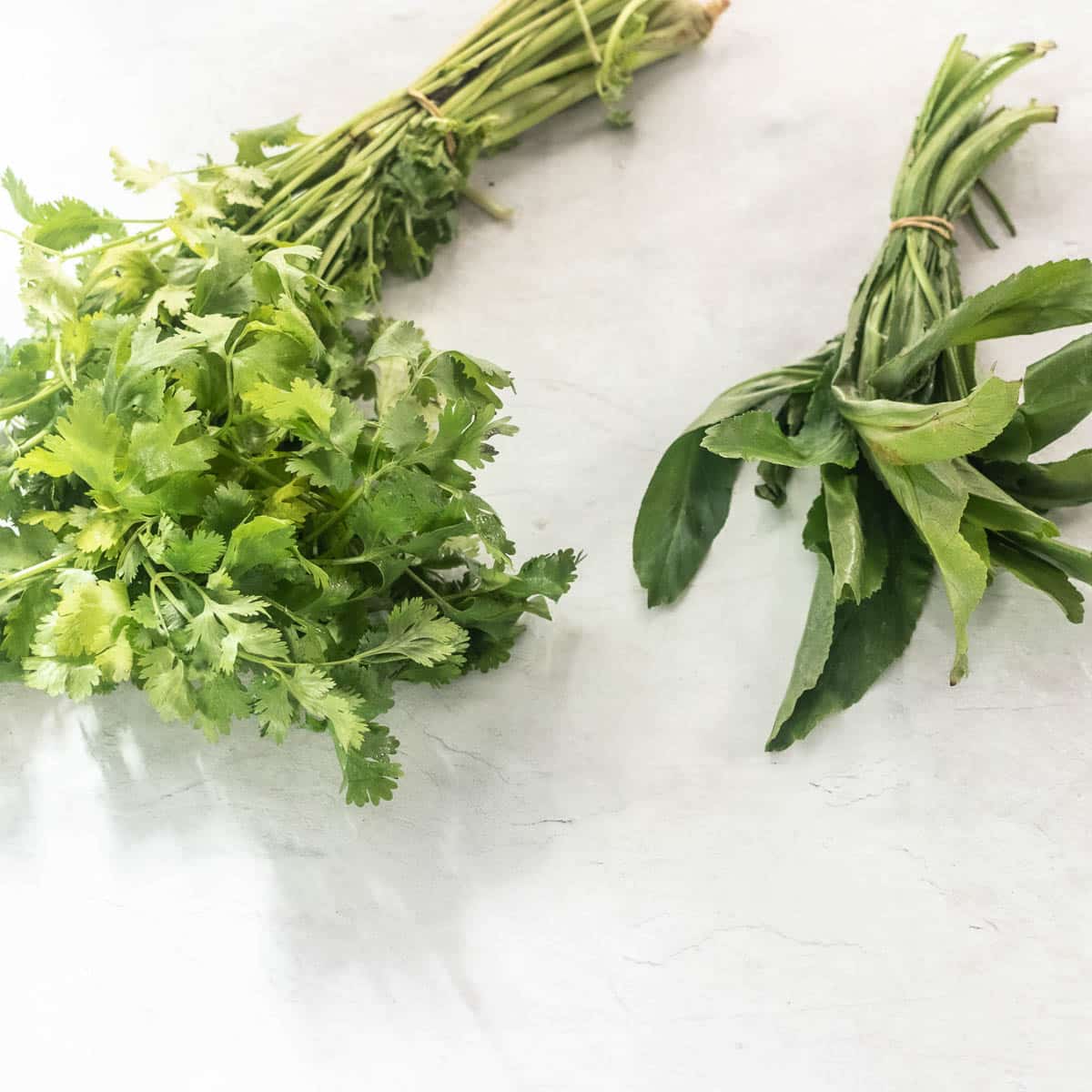
Table of Contents
Different Names of Culantro
A lot of people often wonder about coriander vs. cilantro, so let me first clarify this point. In America, we refer to the herb as cilantro, most likely due to our proximity to Mexico and the Spanish word for cilantro, which is cilantrillo. The rest of the English speaking world calls it coriander.
While in the United States fresh cilantro leaves is referred to as cilantro, we do use the word coriander seeds when referring to the seeds of the cilantro plant.
Now that you know the difference between cilantro and coriander, what are the different names of culantro? I am going to focus on the names used in the western hemisphere and we are going to be here a long time if I go through all the names in the native languages of Southeast Asia.
Culantro is the English word for it, although it is sometimes referred to as long coriander. Recaito is the Spanish word for it. In the Caribbean, spellings can be fluid so you might see it sold as shadoe beni, shado beni, chandon beny and in Trinidad the name is bhandaniya. Throughout most of the West Indies and Spanish speaking Caribbean especially Puerto Rico, culantro is a beloved herb.
These are the most common names you will see it sold as in America, however some people might refer to it as wide-leaf cilantro, long-leafed coriander, Mexican coriander, sawtooth coriander, saw-toothed mint, spiny coriander, spiny cilantro or ngo gai (Vietnamese name).
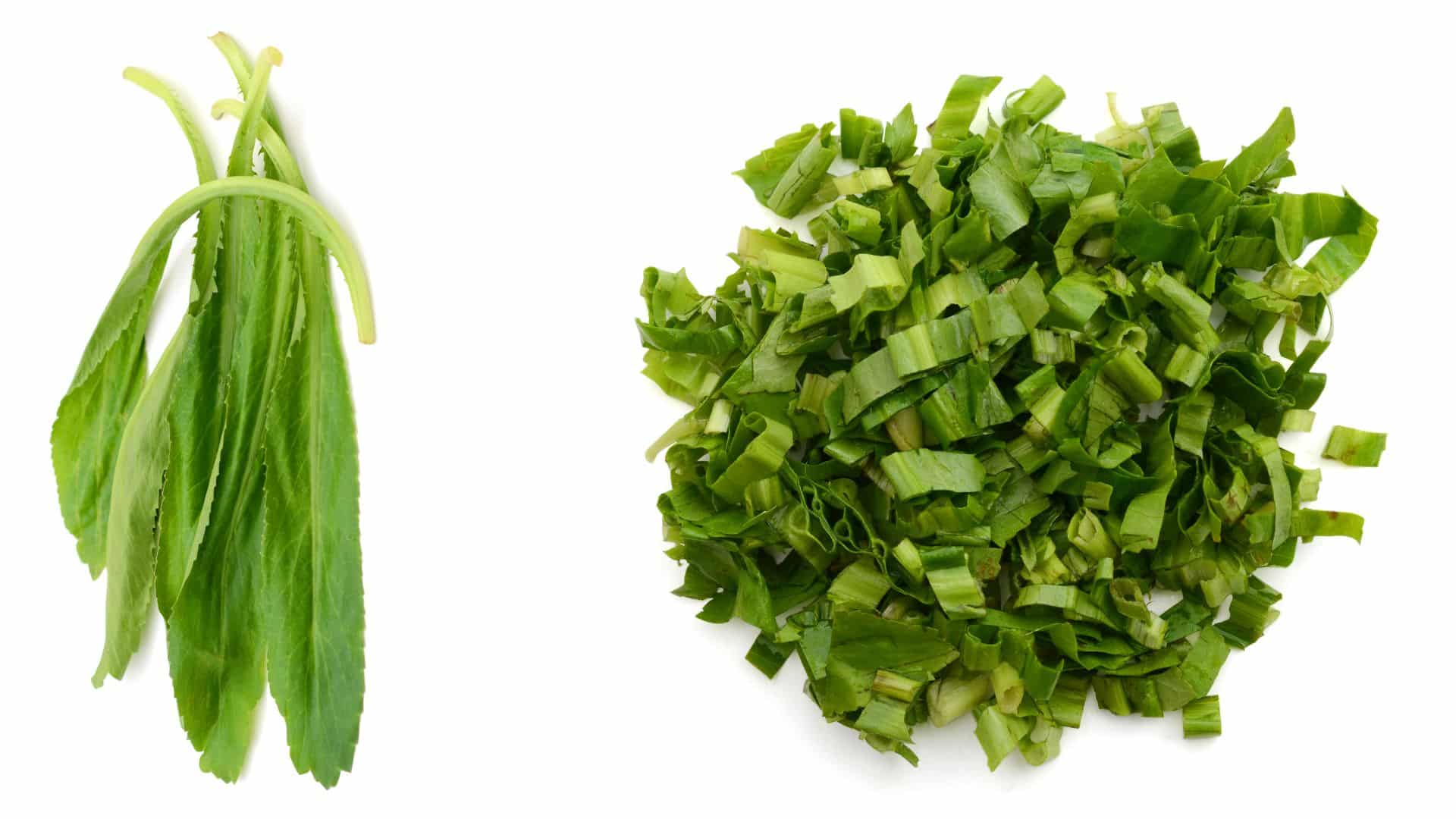
Is Cilantro and Culantro the Same Thing?
Both culantro and cilantro are members of the apiaceae family, but they are two different herbs. Both being a member of the apiaceae family, they join some other delicious and aromatic flowering plants with family members like celery, carrot, dill, parsnip, ajwain, fennel, anise and parsley – just to name a few!
Health Benefits of Culantro vs Cilantro
- Both Culantro and cilantro are high in Vitamins C and Vitamin A and rich in anti oxidants.
- While both herbs are good sources of iron, calcium and potassium, there are higher levels of these in culantro, where as the cilantro levels are minor.
- Cilantro is also a good source of Vitamin K.
Medicinal Purposes
Both of these have been used as a medicinal herb for centuries. Both herbs include aiding with digestion issues as one of its medicinal uses.
Culantro is known for its anti bacterial, anti fungal and anti-inflammatory properties. It has been used to treat ailments like:
- infections
- fever
- high blood pressure
- diarrhea
- gas
- indigestion
Cilantro is knows for its assistance with digestive issues like:
- nausea
- bloating
- flatulence
- bad breath
NOTE: THIS IS NOT MEDICAL ADVICE. PLEASE CONSULT A MEDICAL PROFESSIONAL FOR SERIOUS MEDICAL ISSUES.
Taste of Cilantro vs Culantro
Cilantro is one of those things you either love it or hate it. There’s no middle ground. You will always hear people say “OMG I love cilantro the more the better”. or “How can you eat that? Cilantro makes everything inedible!” You never hear people say “I could take it or leave it”. Did you know it’s a genetic anomaly that causes some people to hate it as it tastes like soap or perfume to them?
It is because they all share a olfactory-receptor gene cluster called OR6A2. This gene cluster picks up the smell of aldehyde chemicals. Cilantro/ Coriander has natural aldehyde in it and aldehyde is used in making soap. Therefore, for these people, cilantro has a soapy flavor.
Both cilantro and culantro have a similar aroma and taste – a floral and citrusy flavor, although culantro has a slight anise flavor also.
Both culantro and cilantro have a very strong flavor, however culantro has a more pungent flavor. This is why there is no middle ground in the appreciation of lack there of in regards to these herbs. Despite culantro having a more pungent flavor and similar taste to cilantro, the flavor of culantro does not seem to offend as many people as cilantro does.
For those of you who do not have the OR6A2 gene cluster, you will find it one of the most flavorful herbs that can elevate almost anything it is added to.
Appearance
Cilantro has small, delicate, spiny leaves on thin stems, with an appearance similar to parsley leaves.
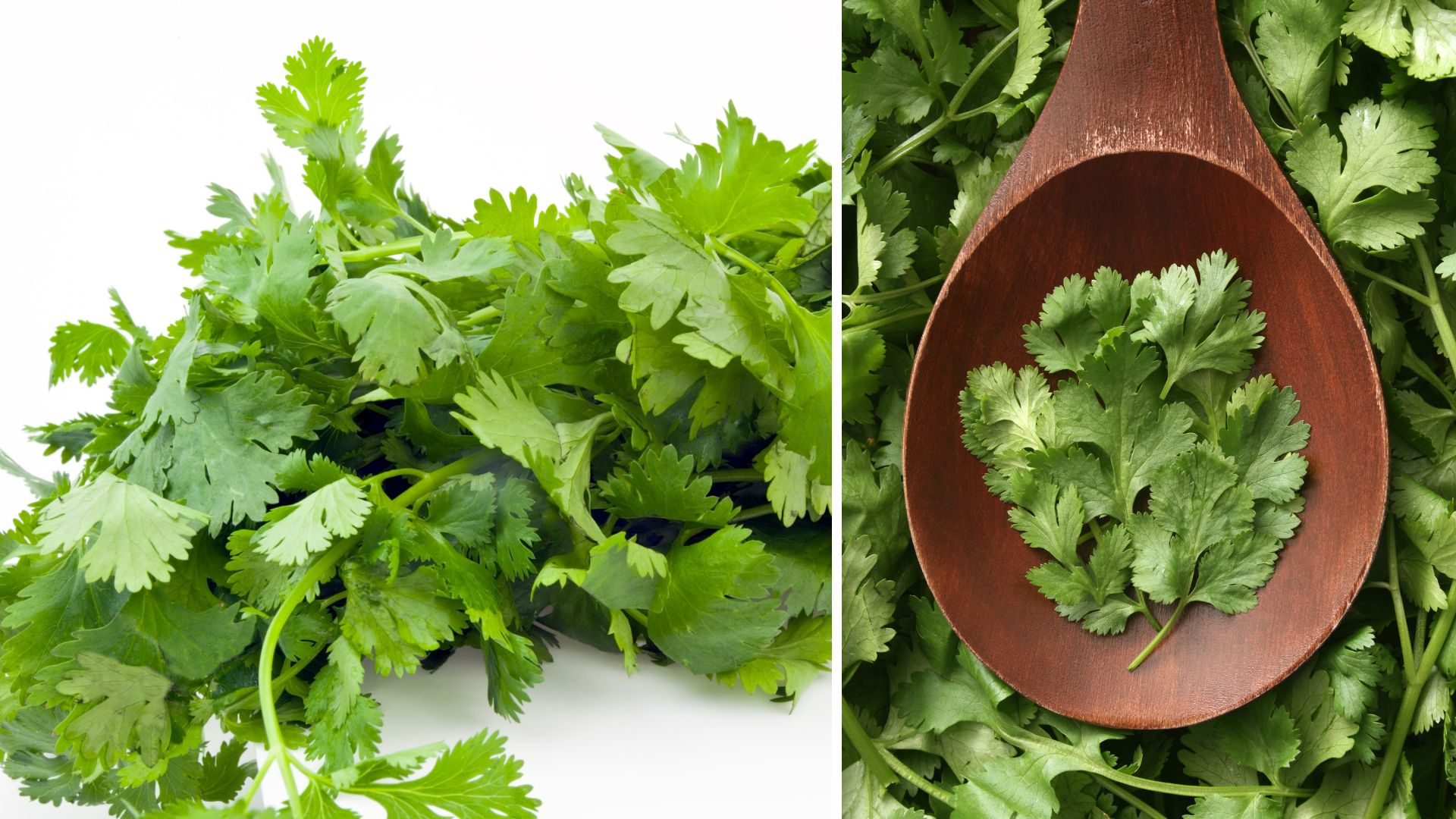
Culantro leaves are longer and wider, almost lettuce-like leaves in appearance, but not as wide – similar to dandelion leaves.
Where can you purchase culantro?
While cilantro is commonly available, culantro is not unless you live in a city with large Caribbean communities like NYC, Boston or Miami. Look for it at a local market or vegetable stands in Caribbean neighborhoods or good international markets with a large selection of international produce. Although culantro is used in some Asian cuisines, it is not very commonly sold in Asian markets in America.
How to Store Culantro and Cilantro
Both herbs can be stored wrapped in damp paper towels in an air tight container in the refrigerator.
However, culantro wilts very quickly, so will have a longer shelf life. It is best to use culantro within 5 days of purchase.
Cilantro can last up to a month if you place it in a jar with some water and cover the top with an upside down plastic bag. Remember to change the water every few days.
Culinary Uses
There are many ways they can both be used:
- Add them into broths when making soups to infuse flavor.
- Essential ingredient In seasoning pastes like green seasoning or sofrito.
- Flavor up meat dishes, rice dishes or vegetable dishes with some chopped cilantro or culantro as a finishing herb at the end of cooking.
- Salads (I prefer the finer texture of cilantro in salads)
Now I know you are excited to utilize both of these delicious herbs. Here are some recipes you should try!
Cilantro Recipes and Culantro Recipes
These herbs are really useful in creating delicious marinades and sauces like:
or delicious main dishes like:
- Coriander Matar Poha (Breakfast Recipe)
- Lamb Kofta Bowl
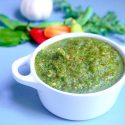

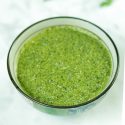

Better Meals, Every Step of the Way – Shop Cooking & Baking Essentials at OXO!

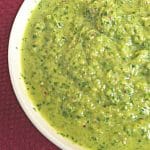


Don’t forget to visit the RECIPE INDEX with over 1000 recipes from around the world including lots of Vegetarian Recipes and Gluten Free Recipes!



Hey Mir! Thank you; you made my life a lot easier. Now, when someone argues with me that cilantro and coriander leaves are two different herbs, I will point them in this direction.
I cannot imagine food without coriander leaves. 😀